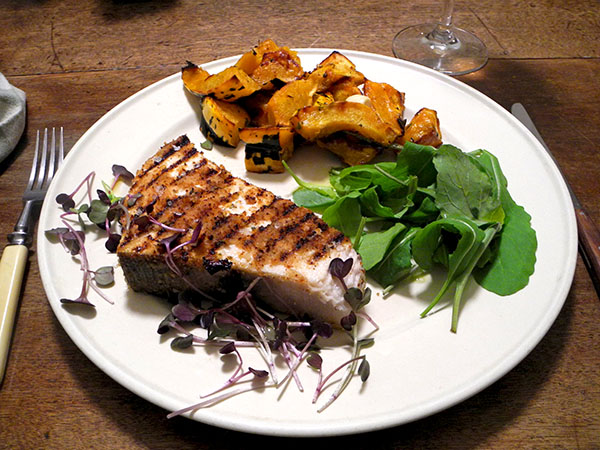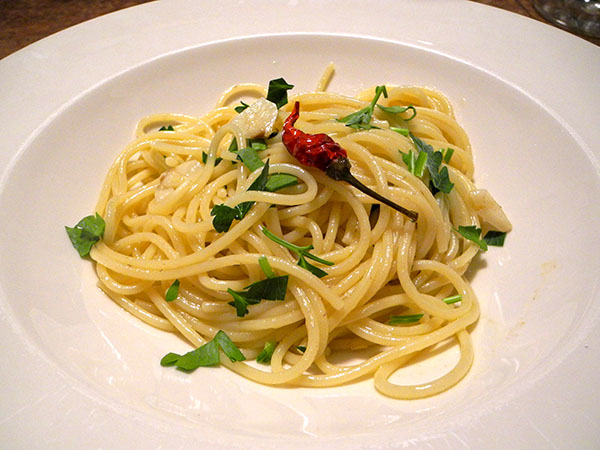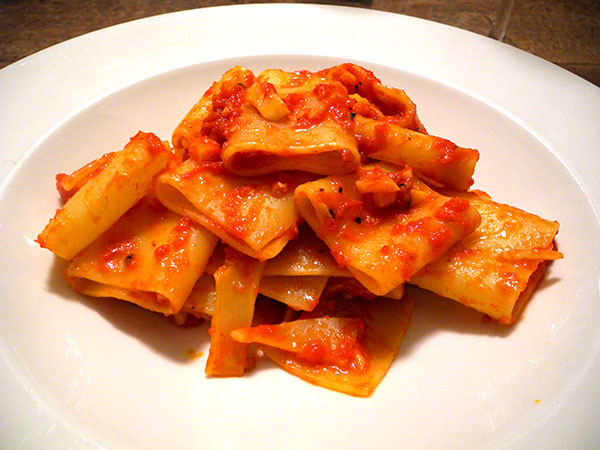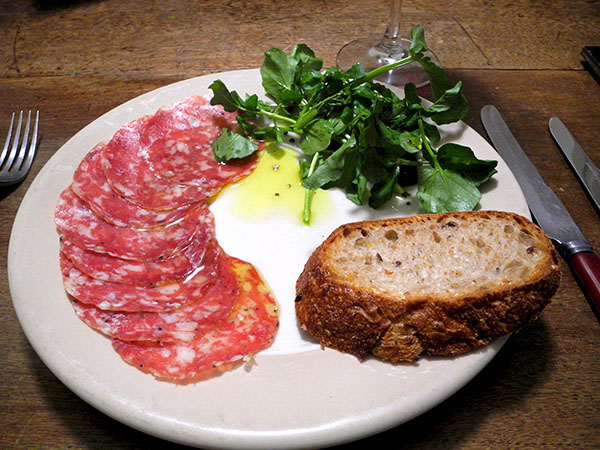
There were no smaller pieces, like those I would usually buy, inside the fisherman’s bucket when I stopped by yesterday, but since the swordfish looked so good (and Warren indicated it was a cut close to the belly), and the price was also very good, I didn’t feel guilty about coming home with a pound and a quarter of such goodness.
Fortunately, that evening I was able to prepare the steaks suitably and grill them à point, but then, unless you fall asleep in the middle of the process, it’s really hard to mess up a swordfish steak.
- two thick 10-ounce swordfish steaks off of Scott Rucky’s fishing vessel, ‘Dakota’, from American Seafood Company in the Union Square Greenmarket, marinated for more than half an hour in a mixture of olive oil, maybe half a teaspoon of super-pungent dried Sicilian oregano from Buon Italia, a small amount of crushed dried peperoncino Calabresi secchi from Buon Italia, and a chopped section of a Japanese scallion from Norwich Meadows Farm, drained well, covered on both sides with a coating of homemade dried breadcrumbs, pan-grilled over medium-high heat for 5 minutes on each side, removed, seasoned with a little sea salt, a little juice from a Whole Foods Market organic lemon squeezed on top, garnished with purple micro radish from Two Guys from Woodbridge [although they were not drizzled with a little olive oil this time, out of consideration for thos beautiful crusty breadcrumbs, I think I really should have]
- one 5 or 6-inch ‘sugar dumpling’ squash from Tamarack Hollow Farm, scrubbed, halved horizontally, the seeds removed, divided into one-inch wedges, tossed lightly in a bowl with olive oil, sea salt, freshly-ground black pepper, and one section of a golden dried habanada pepper, then arranged on a large, unglazed, well-seasoned ceramic Pampered Chef pan and roasted on one side at 450ª for 15 minutes, turned onto the/an other side and allowed to roast for 15 more minutes, removed from both the oven and the pan, once they had softened inside and the edges of the skin somewhat carbonized and crunchy, stirred inside a large heavy tin0lined copper sauté pan in which 2 whole bruised cloves of Keith’s Farm Rocambole garlic had been gently heated in a bit of olive oil before joined by some roughly-chopped sage, also from Phillips Farms
- hothouse-grown local baby arugula from Eckerton Hill Farm, sprinkled with a tiny bit of Maldon salt and freshly-ground black pepper, drizzled with a bit of a very good Sicilian olive oil, from Agrigento, Azienda Agricola Mandranova
- the wine was an Italian (Marche) white, Fontezoppa Verdicchio di Matelica 2016, from Garnet Wines
- the music was Mozart’s 1772 opera, ‘Lucio Silla’, Leopold Hager conducting the Salzburg Mozarteum Orchestra, Salzburg Radio Chorus, and the Salzburg Mozarteum Chorus., with an amazing cast, Edith Mathis, Helen Donath, Arleen Augér, Werner Krenn, Julia Varády, and Peter Schreier





